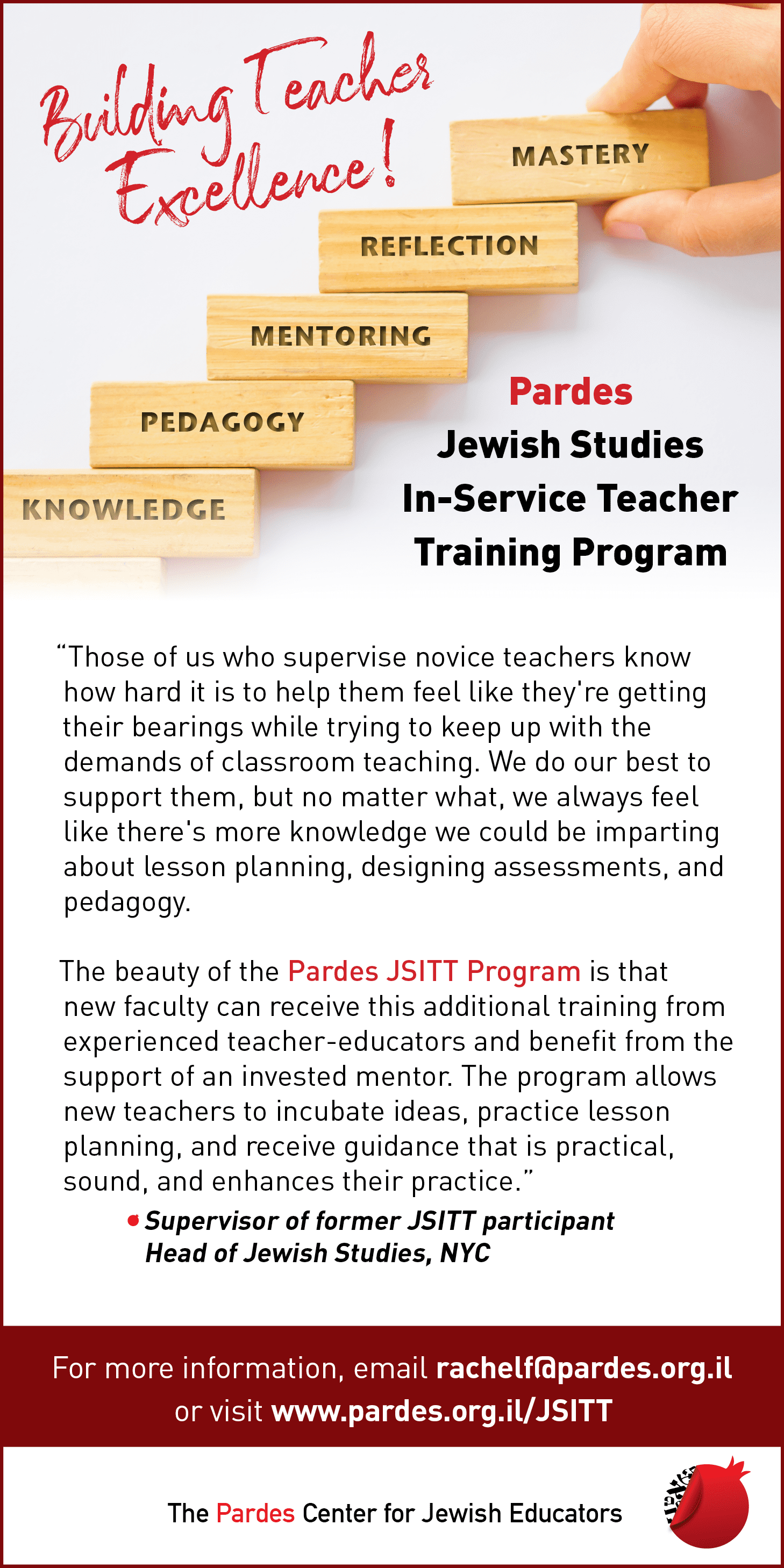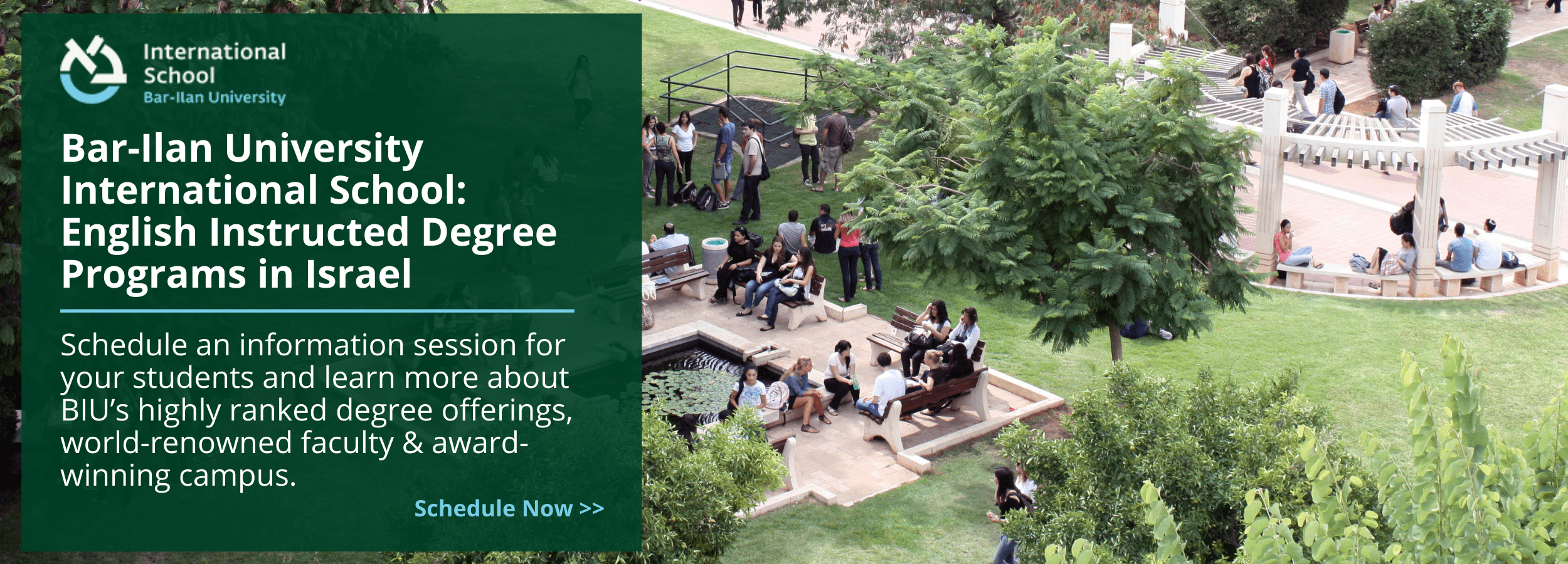There are those who view meaning-making as fluffy or non-substantive. Truthfully, sometimes it is. One can make meaning out of anything; we are a species that thinks symbolically. We infuse meaning into all sorts of things that intrinsically may have no meaning at all. At the same time, once we imbue an item with meaning, such as a stuffed animal, family heirloom, or a flag, we treat that item as something special and distinct from all else around it because it brings us comfort, connection, and substance.
Making Jewish learning meaningful need not fall into that trap of needing to make everything meaningful. One of the few entities shared universally by the Jewish people are our texts: the Tanakh, the Talmud, the commentaries on those texts, and the codes of law, ranging from medieval times to the present era. Given that reality, I would suggest beginning with our shared texts as a basis for both making meaning in our own lives and facilitating students’ meaning-making. Those shared, foundational texts have historically guided our wisdom, values, and decision-making, thereby helping people develop meaning within their own lives.
The Torah does not always concretely or explicitly state solutions to problems big and small. Ben Bag Bag’s insight in Pirkei Avot (5:22), “Hafokh bah va-hafokh bah de-khulah bah, turn it over and turn it over for everything is in there,” resonates strongly. Torah is the source from which we begin our journey to find meaning in the world. That journey is not the same for everyone, and our sources tell us that, too. The adage that the Torah has “seventy faces” reminds us that each individual draws from that source an expression of meaning that is relevant to their own lives.
Please note that the text should serve as the beginning of our process of meaning-making. Numerous other factors contribute to each individual’s personal statement of meaning: their background, their identities, their environment, their education, their experiences in life and their penchants for various disciplines, to name but a few. But what should anchor it all is the meaning that each of us draws from our shared canon.
While this is nice in theory, practical applications matter for educators in their quest to enlighten students. Here are some learnings I have gleaned on meaning-making that can guide lesson development:
Educators should not sacrifice students’ meaning-making for the sake of developing skills or covering content. The old Chinese proverb, “Give a man a fish and you feed him for a day; teach a man to fish and you feed him for a lifetime,” is often used to justify focusing on skills and content. What the adage does not address is that this proverbial man needs to understand what to do with the fish once he has it, or he will still starve. What students think and feel based on what they have learned is at least as important as what they know or can do. Although it is easier to assess knowledge and skills, we cannot afford to sacrifice the development of meaning and purpose from the text because it is more difficult to assess. At the end of each unit, a summative assessment should include not only demonstration of knowledge and skills, but a section in which each student can share some moral lessons that they have extracted from their learning. The use of big ideas, enduring understandings, and essential questions is quite helpful in this endeavor. For example, if at the end of the unit on the exodus from Egypt, and the beginning of the unit on revelation at Sinai, we ask the students to reflect on how much trust the Israelites had in God and how they developed whatever trust they had, the students will begin to discern their own approaches to trust in God and fellow human beings.
Teachers need to know their individual students very well so that they can fashion lessons around each student’s quest for meaning. This knowledge includes general information such as societal influences on this generation and class dynamics in addition to understanding what resonates with each student. For example, I had a student who was very visual, and she derived meaning from the story of the splitting of the Reed Sea by creating a piece of artwork called Almost Halleluyah. The art, together with an artist’s statement, depicted how and why the Israelites were only on the cusp of freedom but not yet truly liberated from Egypt.
Teachers should be very intentional and purposeful in choosing the texts that they teach even if they break from curricular tradition. The claim that a text has always been taught in a certain class is not a good reason to continue teaching it if it is not a good fit. In conversation with colleagues over my career, it is clear that every school has several texts that fall into this category. For example, in schools where I taught, many students were turned off from learning Talmud when studying some of the classical Talmudic texts such as the laws of when one ox gores another. With so much rich content in our sources, an alternative, relevant text could be identified to achieve the learning objectives of a unit. Alternatively, the teacher should find a way to mine the values of that text which the students can apply to their lives.
The meaning a teacher draws from a text may be very different from the meaning that the student sees. We may be able to direct them down a path, but we should feel no obligation or right to impose our meaning onto our students. For example, a student who has lost a sibling may very well read the story of Joseph and his brothers in a completely different way than another student or the teacher who has not experienced this kind of grief. The conclusion that everything that happened in that story or even things that happen every day are the hand of God may ring hollow or false to a child who has experienced such a loss. Within the parameters of Jewish values and Jewish wisdom, we need to allow our students to be themselves rather than pale reflections of who their teachers are.
In order to better help our students embark on their own journeys to embed meaning into their lives, we as educators must be intimately familiar with our planned learning objectives, the texts we want to use to meet those objectives, our students’ interests and personalities, and our own sense of purpose and quest for meaning. With our support and guidance, the students will be primed to return to “the well,” the source of all meaning, again and again over the course of their lifetimes to develop their own individual purpose, relevance, and decision-making skills out of our shared ancient Jewish wisdom.

Sharon Freundel
Sharon Freundel is the Managing Director of the Jewish Education Innovation Challenge which catalyzes radical improvement in Jewish day schools. Prior to this, she was the Director of Jewish Life at the Milton Gottesman Jewish Day School of the Nation’s Capital, and before that, she taught and was the department chair for Tanakh and Rabbinics and was Mashgichah Ruchanit of the Upper School at the Berman Hebrew Academy. She earned a Masters of Arts in Jewish Education from the Baltimore Hebrew Institute at Towson University.



